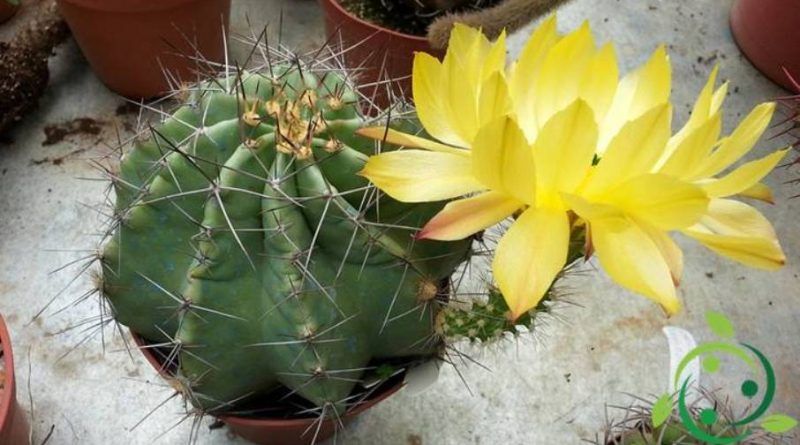How to grow Echinocereus
How to grow Echinocereus
Echinocereus (Echinocereus Engelm., 1848) is a genus of succulent plants belonging to the Cactaceae family originating from Mexico and North America.
These plants can have cylindrical column drums, which crawl on the ground or hang from rocks; they have numerous ribs and areolas with few or many thorns.
The flowers are born above the areoles, sometimes through the laceration of the epidermis. Except for some solitary species, many others develop in groups, forming small tufts with diameters up to two meters.
About 70 species belong to the genus Echinocereus where, in the areas of origin, they grow in very sunny rocky places.
In this card we will see how to grow Echinocereus considering that there are very thorny species with slow growth and others with less fast-growing spines.
Among these species we list some of them:
– Echinocereus rigidissimus (Engelm.) F.Haage – is an erect, short and thick, cylindrical, covered with small flat spines, star-shaped on each areola, red-violet in color at the apex and cream, pink or browns in the other areas of the stem, often with the various colors distributed on the same plant. If grown in the ground it reaches a height of about 50 cm. It flowers in spring forming a crown at the apex of the stem, with large, colorful and spectacular flowers. Three months after flowering, it follows the fruit, which is globose, greenish brown or dark purple, very thorny, with white flesh, about 3 cm in diameter;
– Echinocereus knippelianus Liebner – Especially to solitary elements. It has a globular appearance slightly flattened at the apex, dark green with slightly lighter ribs, up to 10 cm high and 8 cm in diameter. It is a fairly easy species to cultivate that blooms regularly if it is given an adequate winter rest period. It is sensitive to water stagnation and therefore requires good drainage. It requires full exposure only but it would be better to repair it in the summer from the hot afternoon sun;
– Echinocereus viereckii Werderm – It is a very branched cactus from the base with cylindrical and thinned stems up to 50 cm long and 7 cm in diameter. Its texture is soft, the color varies from yellow-green to bright green which tends to purple when exposed in full light. The flowers are the most beautiful feature of this cactus, they are a beautiful magenta color. They sprout towards May from the sides of the stems and are very large, reaching a diameter of 10 cm. The fruits are globose, green and fleshy. These species have some subspecies;
– Echinocereus viridiflorus Engelm. – this plant can be found in Northern Mexico and the United States. It is a species with a cylindrical stem whose height can reach up to 8 cm and a width of 7 cm. The color is dark green. This species grows easily in a sunny position and tolerates temperatures down to 20 degrees below zero.
The characteristic of Echinocereus is that they bloom already a few years after birth, and have large, colorful flowers, at times spectacular the flowering is lasting.
They are also plants that are easy to grow and that are also well suited to growing in pots.
For their cultivation, however, it is necessary to choose an area with plenty of light, in addition, the bush species must be kept in the pots. The ideal area must be well ventilated and in full sun; it is essential to place the plants outdoors during the good season, in fact they do not bloom if kept away from the sun’s rays. The species Echinocereus viereckii and Echinocereus scheeri like partially shaded locations.
In nature, many species are resistant to cold, tolerating temperatures down to -20 ° C.
When choosing the substrate, remember that Echinocereus needs well-drained soil; the substrate varies according to the species; fast-growing species need rather fertile soils, slow-growing ones prefer fertile soils mixed with sand and well-drained soil.
In the cultivation in pots it is necessary to consider its dimensions in relation to those of the plant, its proportions and the material of which it is made. The vessel must have drainage holes to prevent water stagnation at the bottom of the vessel.
It is advisable to choose, however, larger than tall vases, so that the surface of the substrate exposed to the air is wide to facilitate the evaporation of the water and to favor the development of the plant. In the deep pots it is possible that the soil on the bottom always remains a little damp.
Furthermore, the repotting technique must be carried out in spring, if necessary, using a vase only slightly wider than the previous one.
In the cultivation of Echinocereus in the open ground we recommend the choice of substrates consisting of coarse sand, mixed with organic substance and medium-textured soil.
For water needs it is necessary to start from the period of March, when the buds are already developed, and it must end in October; moreover, in the period between November and March it is not necessary to irrigate with sporadic spraying.
As far as multiplication is concerned, it is evident that Echinocereus is propagated by stem or seed cuttings. Sowing takes place in spring on a substratum kept humid at 20-22 ° C away from direct sunlight.
The must be kept in a warm dry place and not exposed to direct sunlight and buried in a basic compound for cacti consisting of pumice and sand.
For fertilizing it is emphasized that this must be rich in phosphorus; for plants cultivated in the open ground it is possible to provide with organic substance distributed just before the vegetative growth and enriched with phosphates. For plants grown in pots it is necessary to choose liquid fertilizers for succulent plants, enriched with phosphorus, and distributed every 15-30 days.
For pruning instead the Echinocereus do not need any intervention.

